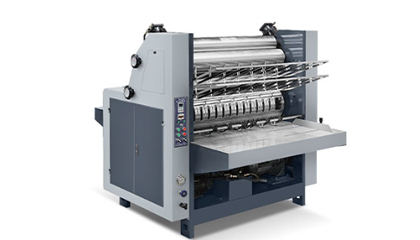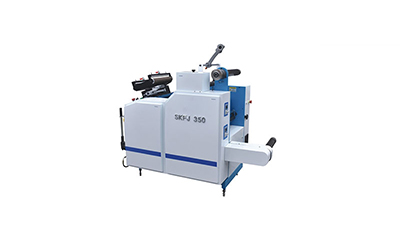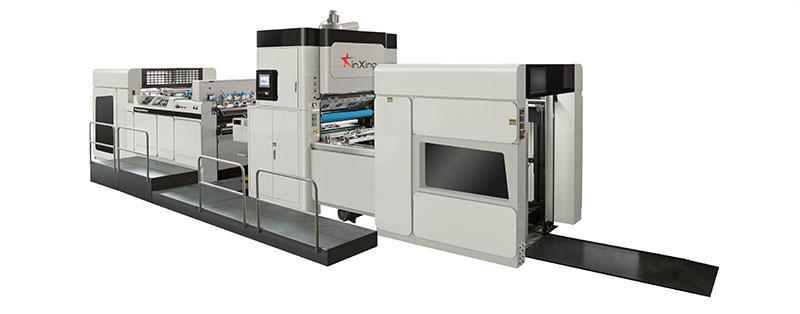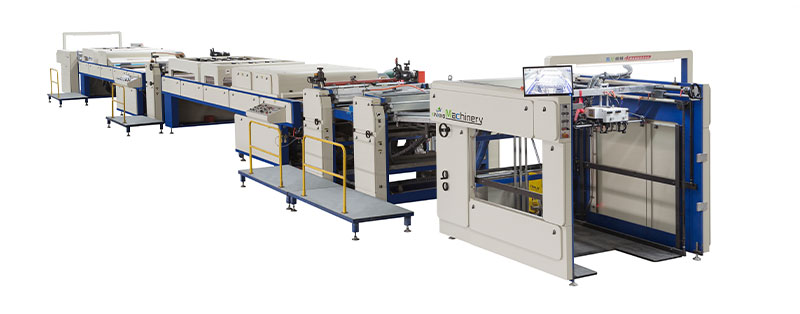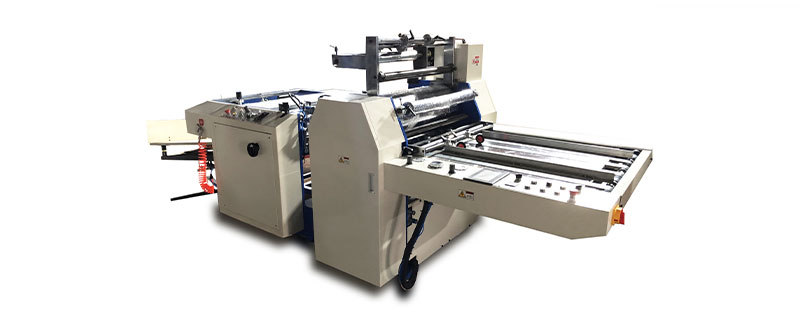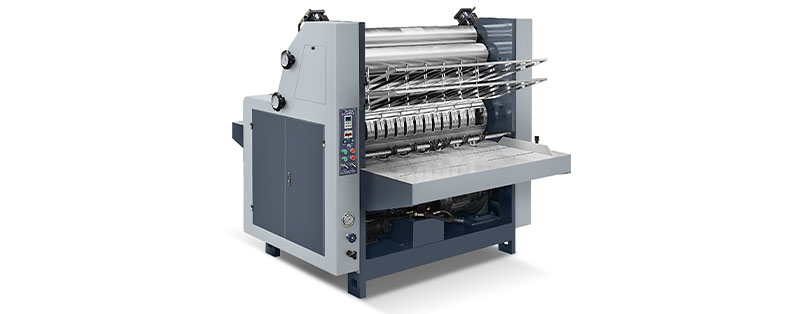In the modern packaging printing and related processing industries, automatic film laminating machines play an extremely important role. They can apply a protective film to the surface of various printed materials or other materials, which not only improves the appearance and texture of the products but also enhances their durability and protective performance. Having an in-depth understanding of the working principle of automatic film laminating machines is of great significance for practitioners in relevant industries, equipment users, and those interested in packaging printing processes. It helps them make wiser decisions and take more appropriate actions in aspects such as equipment procurement, operation, process optimization, and troubleshooting. This article will conduct a comprehensive and detailed analysis of the working principle of automatic film laminating machines to reveal the technical mysteries and operating mechanisms behind them.
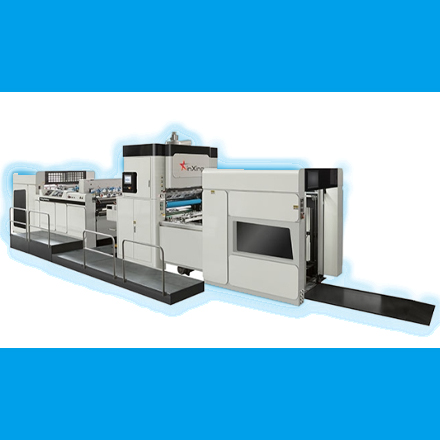
I. Basic Components of Automatic Film Laminating Machines
(I) Unwinding Mechanism
The unwinding mechanism is the starting part of the automatic film laminating machine and is mainly responsible for carrying and releasing the film roll to be laminated. It is usually equipped with an adjustable tension control system to ensure that the film can be output with stable and uniform tension throughout the laminating process. For example, the tension sensor is used to monitor the tension of the film in real time, and with the help of motors or brakes and other devices, dynamic adjustments are made according to the set values to avoid film stretching and deformation caused by excessive tension or film wrinkling due to insufficient tension, thus providing a good film supply foundation for the subsequent laminating processes.
(II) Glue Application System
The core function of the glue application system is to evenly apply glue to the surface of the film. Depending on different laminating process requirements and glue types, there are various glue application methods. The common one is roll coating, which uses a coating roller to pick up glue from the glue tank and transfer it evenly onto the film. This method can precisely control the amount of glue applied and is suitable for various glue viscosities and film materials. In addition, there is also the knife coating method. By using a scraper to remove the excess glue, only a uniform and precisely thick glue layer is left on the film, which is especially suitable for fine laminating operations with high requirements for glue coating amount, such as the laminating of packaging materials for electronic components.
(III) Laminating Mechanism
The laminating mechanism is the key part for realizing the bonding of the film and the substrate. It mainly consists of a pressure roller and a heating roller (in the hot laminating process) or a cooling roller (in the cold laminating process). The pressure roller applies a certain pressure to make the film with glue closely contact the substrate, ensuring that the glue can fully wet and bond the two. In the hot laminating process, the heating roller transfers heat to the film and the substrate to make the glue solidify quickly, improving the firmness of the lamination and production efficiency. While in the cold laminating process, the cooling roller reduces the temperature of the glue to make it gradually solidify in a natural state. This process is relatively environmentally friendly and is suitable for some materials that are sensitive to temperature or should not be heated.
(IV) Rewinding Mechanism
The rewinding mechanism is located at the end of the automatic film laminating machine and its function is to wind up the laminated products neatly. Similar to the unwinding mechanism, the rewinding mechanism also has a tension control function to ensure the flatness and tightness of the products during the winding process. Meanwhile, it may also be equipped with a length measuring device or a counter to accurately count the length or quantity of the laminated products, which is convenient for production management and quality control. For example, in the large-scale laminating production of printed materials, the length measuring device can accurately control the length of each roll of laminated products to ensure the consistency of product specifications.
II. Working Process of Automatic Film Laminating Machines
(I) Film Unwinding and Pretreatment
Firstly, the selected film roll is installed on the unwinding mechanism, and the tension control system of the unwinding mechanism is initially set according to parameters such as the material, thickness, and width of the film. After starting the unwinding mechanism, the film begins to be slowly released under the traction of tension and passes through a series of guide rollers to enter the glue application system smoothly. Before entering the glue application system, there may be pretreatment processes such as dust removal and static elimination to remove dust particles and static electricity on the surface of the film, improving the adhesion effect of the glue on the film and ensuring the laminating quality. For example, by using a static eliminator to release opposite charges to neutralize the static electricity on the surface of the film, it prevents dust from being difficult to remove due to electrostatic adsorption.
(II) Glue Application
After the film enters the glue application system, the glue application system starts to work according to the preset glue application method and parameters. For example, when using roll coating, the coating roller rotates at a certain speed to dip glue from the glue tank and then evenly applies the glue to the surface of the film. During this process, factors such as the viscosity of the glue, the rotation speed of the coating roller, the glue level in the glue tank, and the gap between the scraper and the coating roller will all affect the amount and uniformity of the glue applied. Operators need to accurately adjust these parameters according to the actual laminating requirements and material characteristics to obtain the desired glue application effect. For example, when the laminated product has a higher requirement for the thickness of the glue, the rotation speed of the coating roller can be appropriately increased or the glue level in the glue tank can be increased. When a thinner and more uniform glue layer is required, the gap between the scraper and the coating roller can be reduced.
(III) Bonding and Curing
The film with glue continues to be transported forward and enters the laminating mechanism. At this time, the substrate (such as printed materials, paper, boards, etc.) is also sent to the laminating mechanism through the corresponding conveying device to meet the film. In the laminating mechanism, the pressure roller applies a certain pressure to make the film and the substrate closely bonded together, and the glue begins to wet and bond the two under the action of pressure. In the hot laminating process, the heating roller transfers heat to the bonded film and substrate to make the glue solidify rapidly and form a firm laminated layer. The temperature of the heating roller, the pressure of the pressure roller, and the bonding time all need to be optimized and adjusted according to different material combinations and laminating requirements. For example, for some substrates with a relatively hard texture, it may be necessary to appropriately increase the pressure of the pressure roller to ensure full bonding between the film and the substrate. For some heat-sensitive materials, the temperature of the heating roller needs to be reduced to prevent the materials from being deformed by heat. In the cold laminating process, the cooling roller plays a role in reducing the temperature of the glue and promoting its natural solidification. Although the curing time is relatively long, it can avoid the risk of material deformation caused by heating.
(IV) Rewinding and Finished Product Finishing
The laminated and cured products finally enter the rewinding mechanism. The rewinding mechanism winds up the products neatly according to the set tension and winding speed. During the rewinding process, the tension control system monitors and adjusts the winding tension in real time to ensure that the products are wound tightly and flatly. Meanwhile, the length measuring device or counter records the length or quantity of the wound products. When the preset value is reached, the rewinding mechanism automatically stops working. After the rewinding is completed, the products can be further organized, cut, or packaged according to needs for subsequent storage, transportation, or sales. For example, for some large-format laminated products, they may need to be cut into smaller-sized products that meet specific specification requirements and then packaged.
In conclusion, automatic film laminating machines can complete the laminating operation for various materials efficiently and precisely through the coordinated work of each component and following a specific working process. With the continuous progress of science and technology, the working principle of automatic film laminating machines is also constantly being innovated and optimized, and its application prospects in packaging printing and other industries will be even broader, providing powerful technical support for improving the quality and diversifying the development of products.


